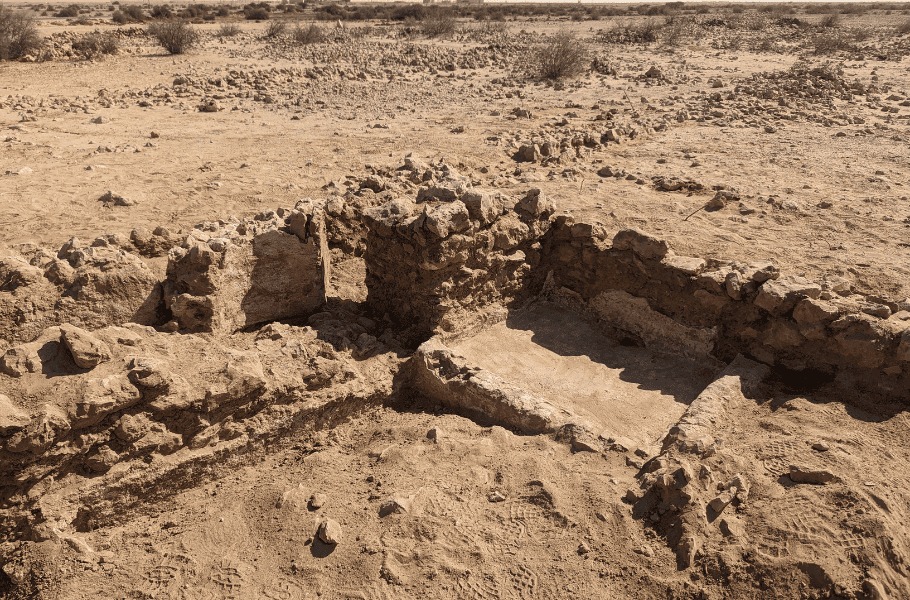Umm Al Maa is an important archaeological site in northwestern Qatar, offering a fascinating look into the country’s early coastal settlements. The name “Umm Al Maa” translates to “Mother of Water,” which reflects the site’s historical proximity to water sources and its importance as a settlement during the Islamic period, particularly between the 16th and 18th centuries.
Umm Al Maa is believed to have been a thriving fishing and trading village, positioned strategically along historic maritime routes. The site contains the remains of stone houses, a small fort-like structure, and pottery fragments that suggest links to regional trade with Bahrain, Iran, and the wider Gulf area. Archaeologists have also uncovered evidence of date storage pits and imported ceramics, indicating a well-organized community with economic ties.
Set against a desert backdrop with views of the distant coastline, Umm Al Maa offers visitors a quiet, raw, and authentic experience. Its untouched terrain and minimal tourism development make it perfect for cultural explorers and history enthusiasts seeking to connect with Qatar’s past.
Umm Al Maa is a must-visit for those interested in Islamic history, maritime heritage, and the daily lives of early Gulf communities.
Highlights
- Remnants of stone dwellings and coastal architecture
- Located along ancient maritime trade routes
- Islamic-era pottery and storage pit discoveries
- Serene desert setting near the northwest coast
- Uncrowded site ideal for history buffs and explorers
Ticket Information
- Admission: Free
- No ticket required
- Academic or guided visits: May require prior coordination with Qatar Museums
Opening Hours
- Open access: 24/7
- Best time to visit: October to March for cooler weather and better site visibility
- Visit during daylight for safety and exploration
